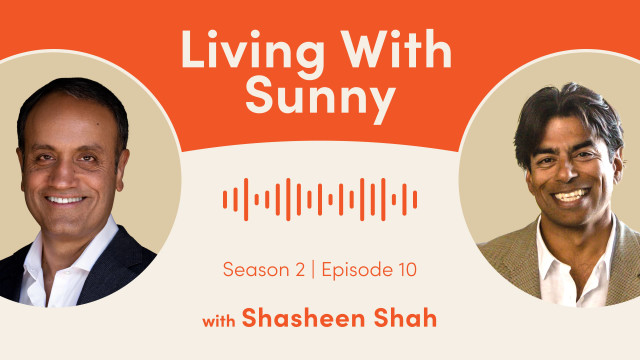Find Focus with Meditation

The demands of the digital age can make it nearly impossible to concentrate on one thing for more than a few seconds. In a study of American media consumption, the Pew Research Center found that 44% of 18- to 49-year-olds said they’re almost always online — and mostly using Facebook, TikTok, and YouTube, says app analytics firm Unified Data AI (formerly App Annie).
This is bad news for brain health: research suggests constant exposure to various types of media and social channels, especially those that quickly generate content, has led to a collective decrease in attention span.
The good news is focus can be cultivated through practice, and meditation may help. At first, you’ll probably still feel that urge to check your feeds, but you’ll learn to witness it without giving in.
Meditation can help you notice when your mind is straying from what’s right in front of you, so you can redirect your attention back to the present moment. For example, a study published in “NeuroImage” found that concentrating on breath or sound during sitting practice decreased activity in the DMN (default mode network) — the part of the brain that’s turned on when you’re distracted.
How to Focus
According to Roundglass meditation teacher and attention expert Jay Vidyarthi, there are three ingredients to focus, each requiring mindfulness and present-moment awareness.
The first part includes finding the right level of effort using two levels of awareness. Focused awareness is high effort and involves noticing when your mind begins to wander so you can bring it back to the present moment.
Guided meditations that help redirect your attention to breath, sound, or feelings like anxiousness and gratitude show you how to do this. When your brain inevitably strays, use mindfulness to gently return your awareness to your desired point of focus.
Try this online meditation class, Increase Focus and Concentration, by David Vago, Ph.D., Roundglass research lead and neuroscientist, to learn how to rest your awareness on one thing at a time.
Open (easeful) awareness is noticing what thoughts and feelings are passing through your consciousness without getting attached to them. It teaches you how to exist in the present moment without following a wandering mind. Try practicing it throughout your day.
Learn focused awareness before trying open awareness, Vidyarthi says: as you build skills like attention, directing focus, and being present making open awareness easier. The key, Vidyarthi says, is finding the right amount of effort and applying it to the task at hand. Open awareness needs less effort than focused awareness, he says. The goal is to find the ideal amount without overdoing it.
Another component of sharpening your concentration is practicing nonjudgment. Getting distracted is natural, as our brains are used to watching 15-second Tik-Toks, or minute-long reels. And being accustomed to focusing in short bursts makes sustaining attention harder, says Roundglass Senior Researcher Rebecca Acabuchuk, Ph.D.
Rather than feeling guilty or frustrated while powering through hours of minimum productivity, use nonjudgmental awareness to recognize when you’ve hit a mental limit and could use a break.
Instead of berating yourself, try thinking, “I'm reaching a level of exhaustion and looking for a quick fix. It's not because I'm a bad person or worker.” From there, you can decide what you need — a walk around the block, a shower, or a cup of tea.
You can also try doing 10- to 20-minute online meditation class or use focused awareness to practice staying present during a 30- to 60-minute yoga session, Acabchuk says. Doing so may help in training your brain to concentrate for longer periods.
Simply noticing when you’ve lost focus will help you learn your attention patterns, Vidyarthi says. Food, exercise, and the time of day can naturally affect the quality of your concentration.
Take note if you’re more preoccupied after a second cup of coffee or can’t find the motivation to focus in the afternoon. Knowing your strengths and weaknesses will allow you to make lifestyle adjustments needed to stay productive through the day — like working on demanding tasks in the morning and drinking decaf or chamomile tea after your first espresso.
With that in mind, here are three ways to mindfully navigate distractions throughout your day.
1. Keep Reminders of Recess Ideas Close By
Taking routine breaks is essential to wellbeing and has even been linked to increased productivity. Setting reminders to get some fresh air, a change of scenery, or enjoy a yummy drink or music gives your mind time to think (or not think) about work tasks while gaining a fresh perspective.
Sharpen Your Attention in 2 Minutes with this guided session by Roundglass meditation teacher and attention expert Jay Vidyarthi.
If you spend long periods staring at a computer, give your eyes a rest by stepping outside to look up at the clouds or at a building off in the distance, Vidyarthi says. One research paper published in “SpringerLink” suggests doing so may ease eye strain caused by screen time.
Not giving your eyes periodic breaks can make them dry or itchy, cause headaches and hinder your ability to stay focused, according to Cedars- Sinai, a nonprofit academic health care firm.
2. Manage Your Space
Sometimes the best way to avoid nagging distractions is to remove them altogether. Research has found that simply having a smartphone in the room decreases your ability to focus — even if it’s silenced or tucked away in a drawer.
You can set yourself up for success by removing your phone from arm's length, or by using distraction-blocking apps: Freedom for example, can lock out interruptions (think websites, apps, notifications) on all your devices simultaneously while sites like SelfControl allow you to schedule irreversible blackout periods.
3. Take a Power Nap
Without sleep we’d never focus. Sleep deprivation reduces activity in areas of the brain responsible for deciding where to allocate attention and makes it harder to retain information, resist impulses like scrolling, and successfully switch between different tasks or projects.
If you can take a 30-minute break, a quick nap can help. A study from “ResearchGate” found a 20-minute midday nap may leave you feeling more alert and focused, sharpening concentration. And if siestas aren’t your thing, try Yoga Nidra or a body scan, which Acabchuk says are great alternatives to relaxing your body and mind without falling asleep.
Try this course, How to Train Your Attention, by Roundglass meditation teacher Earle Birney, to learn to choose where to direct your focus for greater joy and wellbeing in all areas of life.
Key Takeaways
- Build self-awareness through nonjudgment.
- Learn your focus patterns.
- Limit digital distractions.
- Set aside 20 minutes to be productive.







